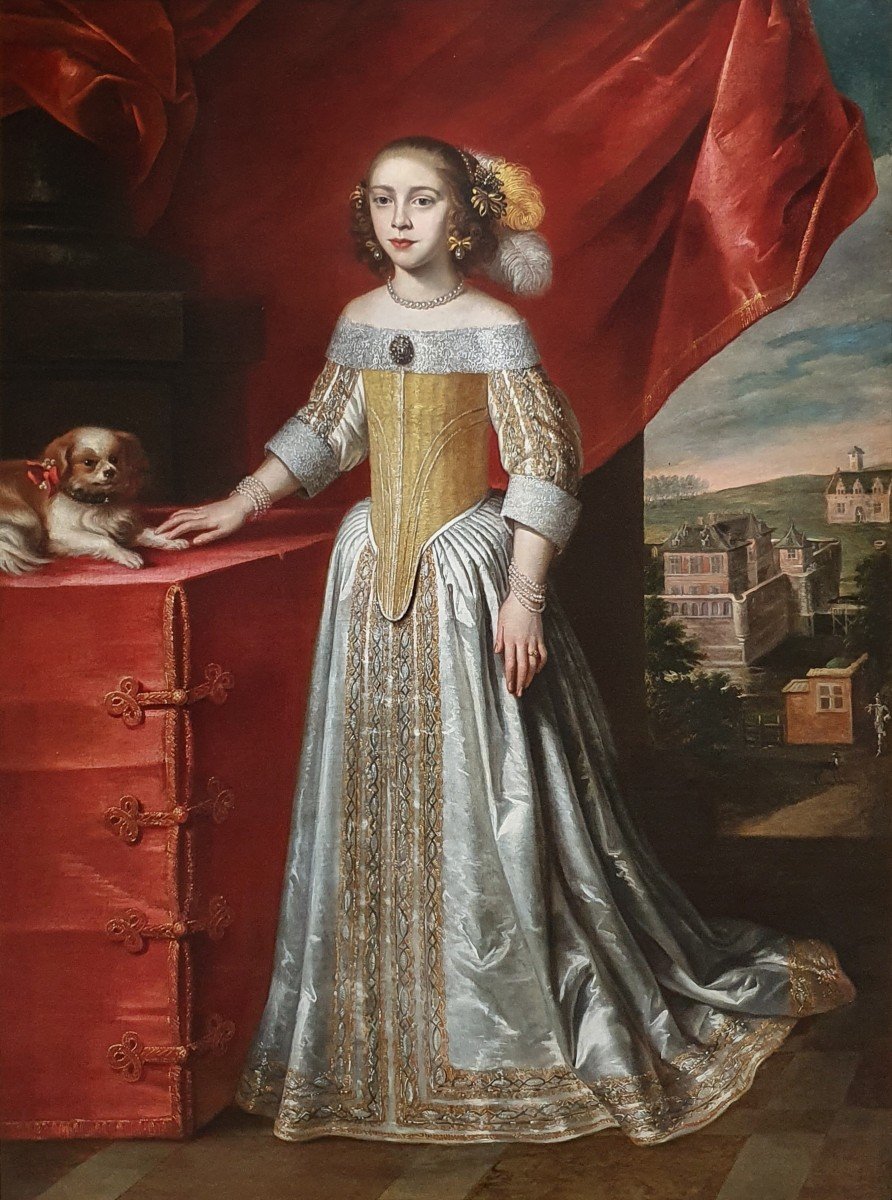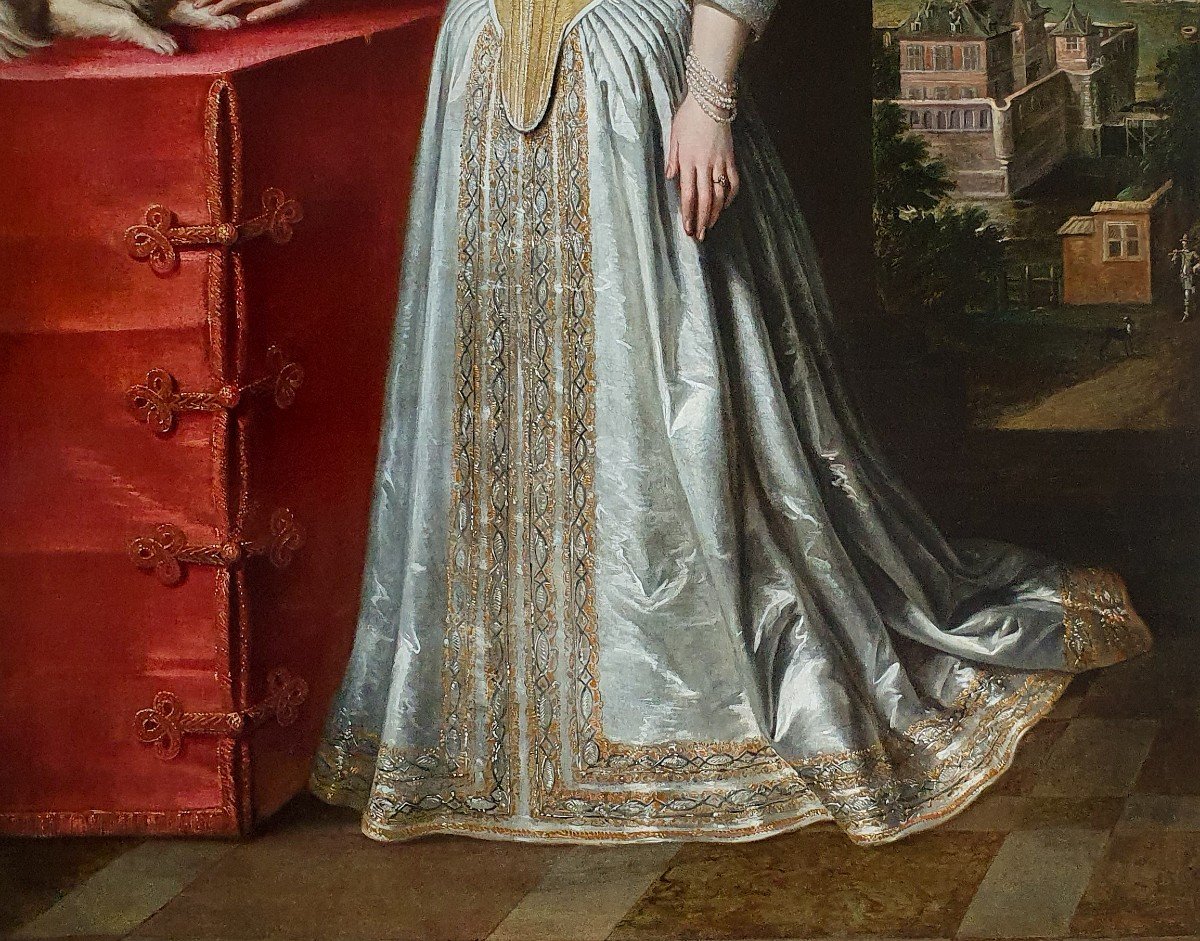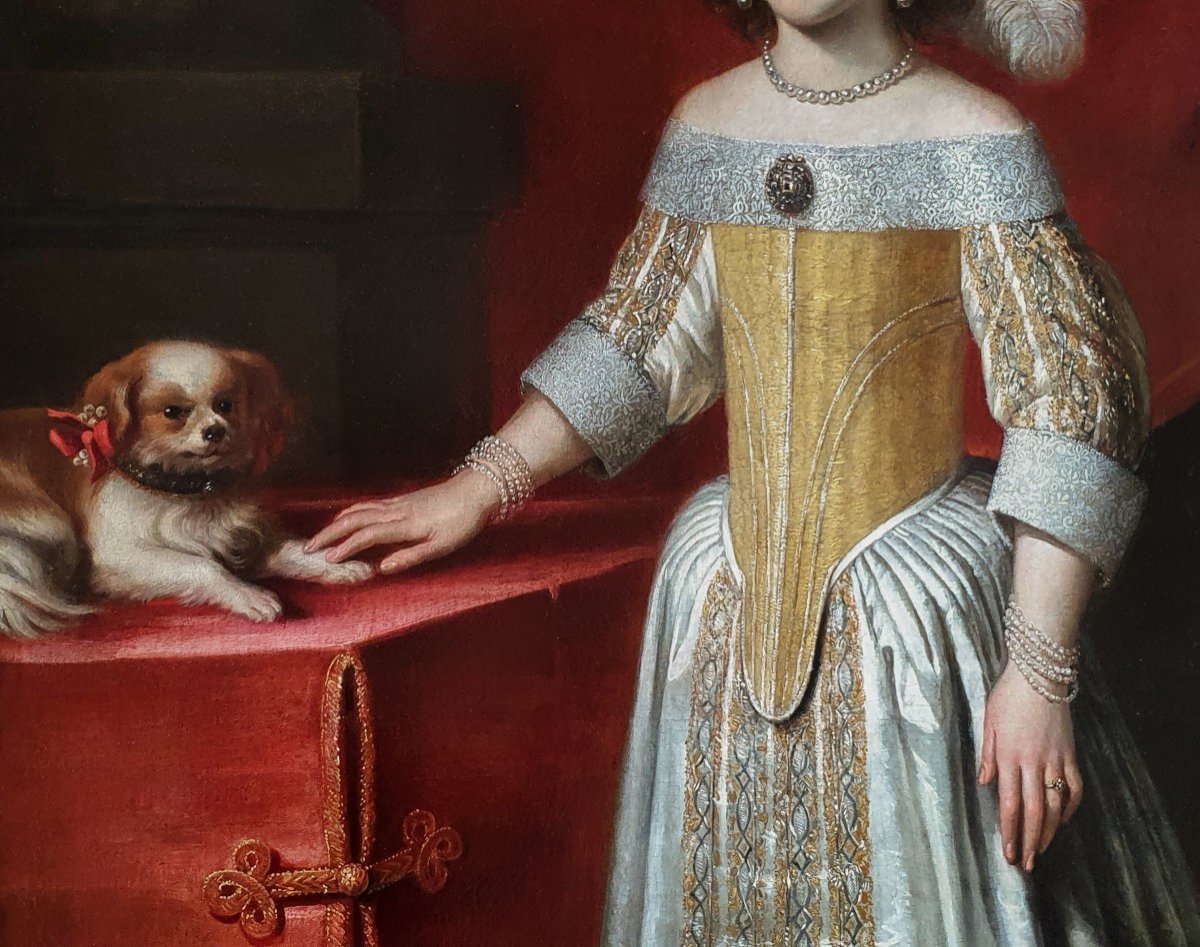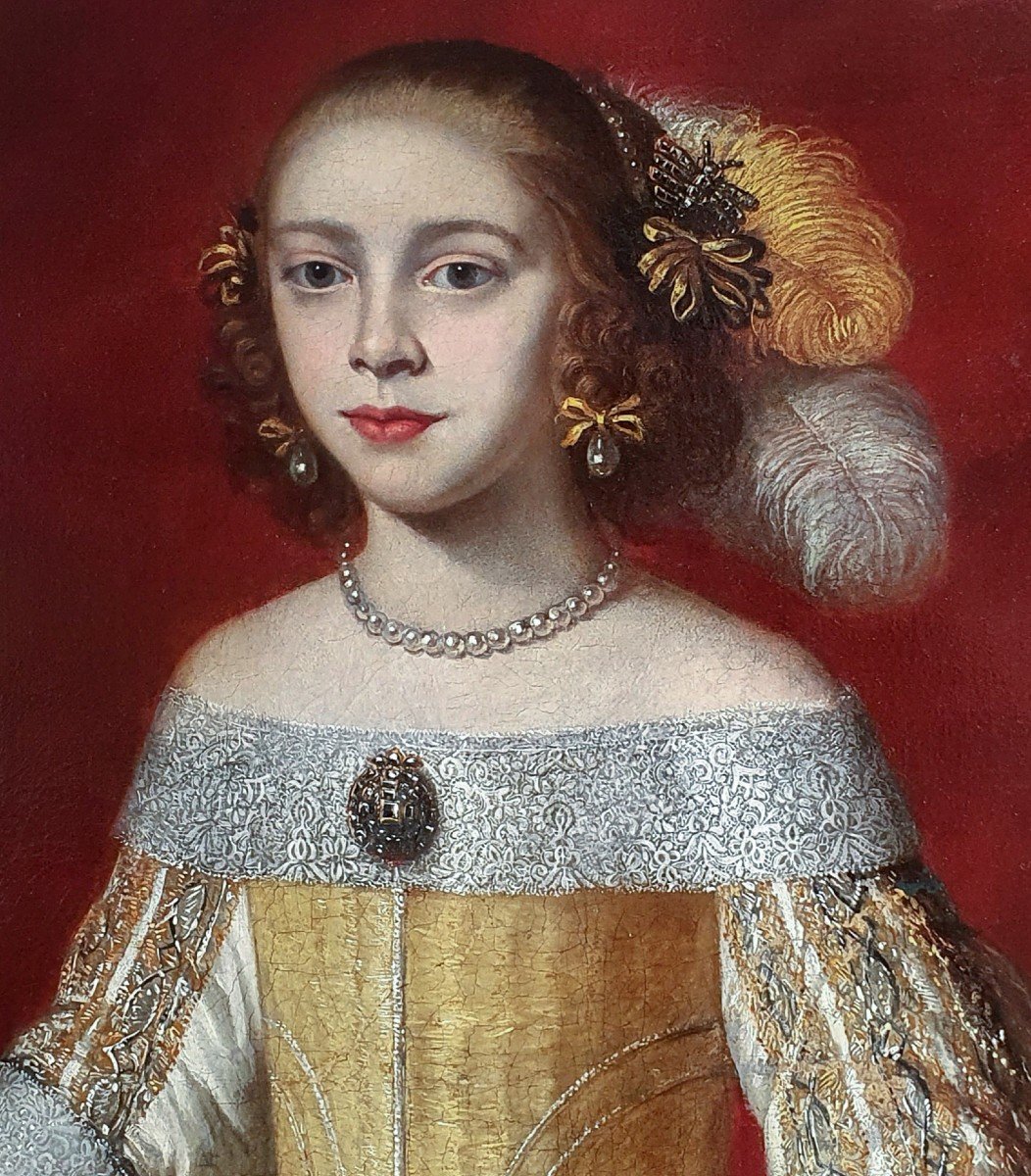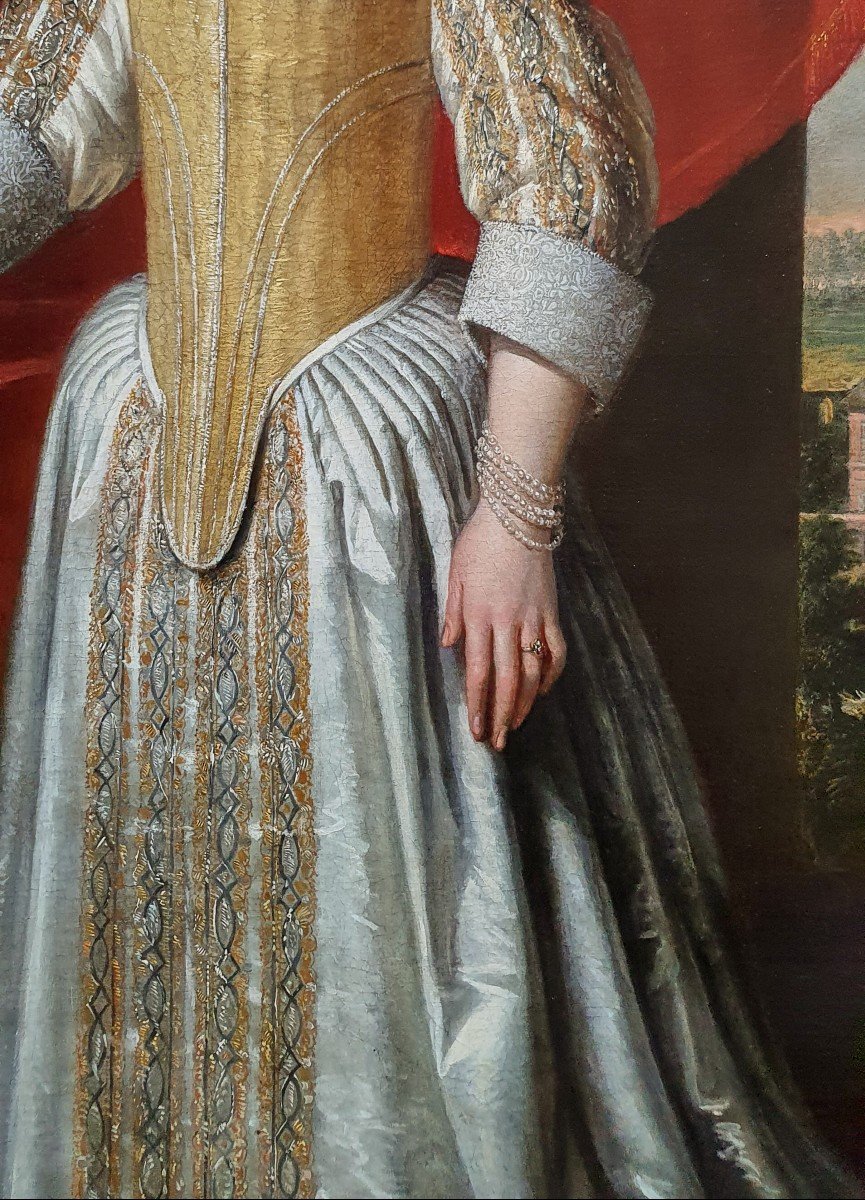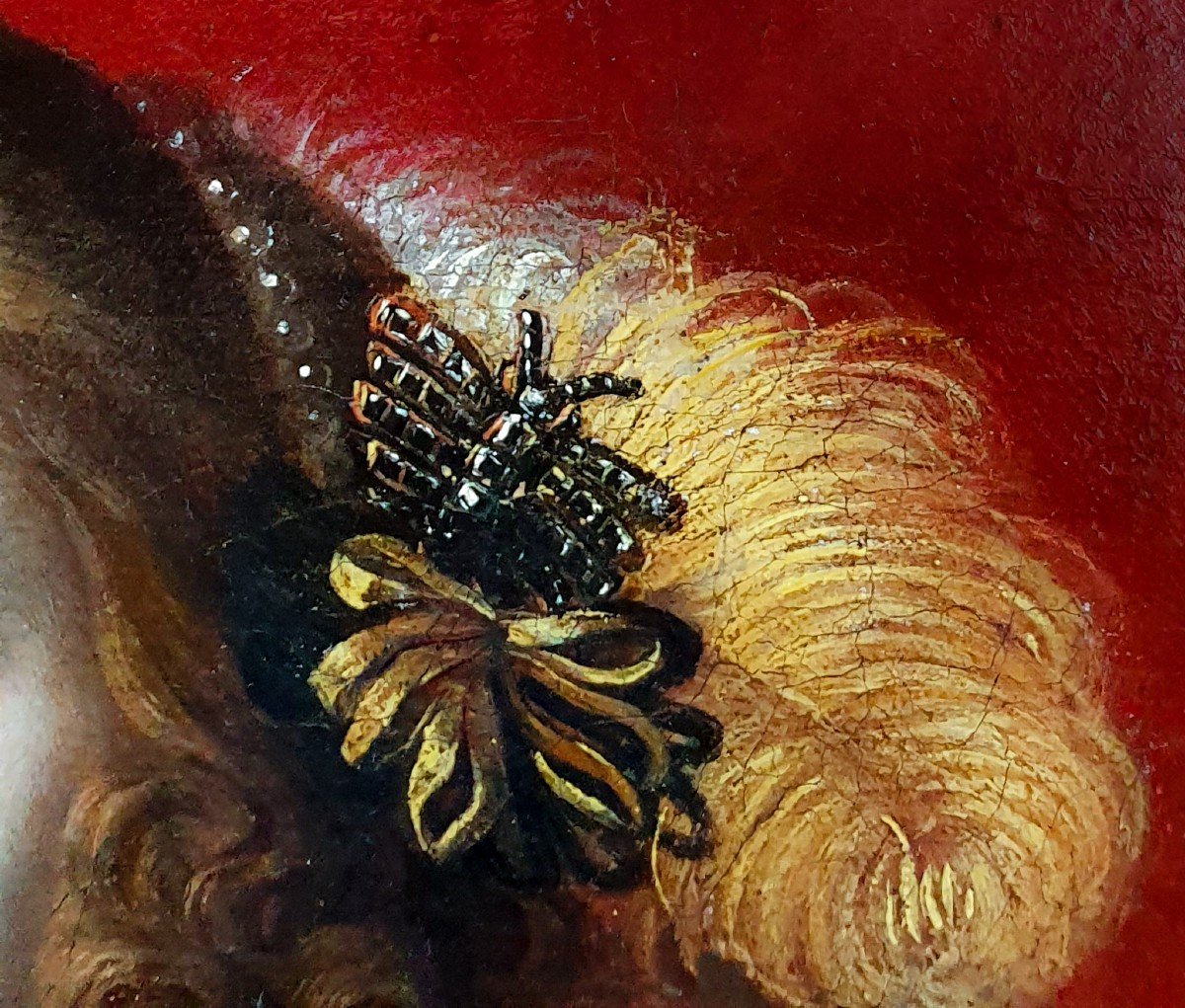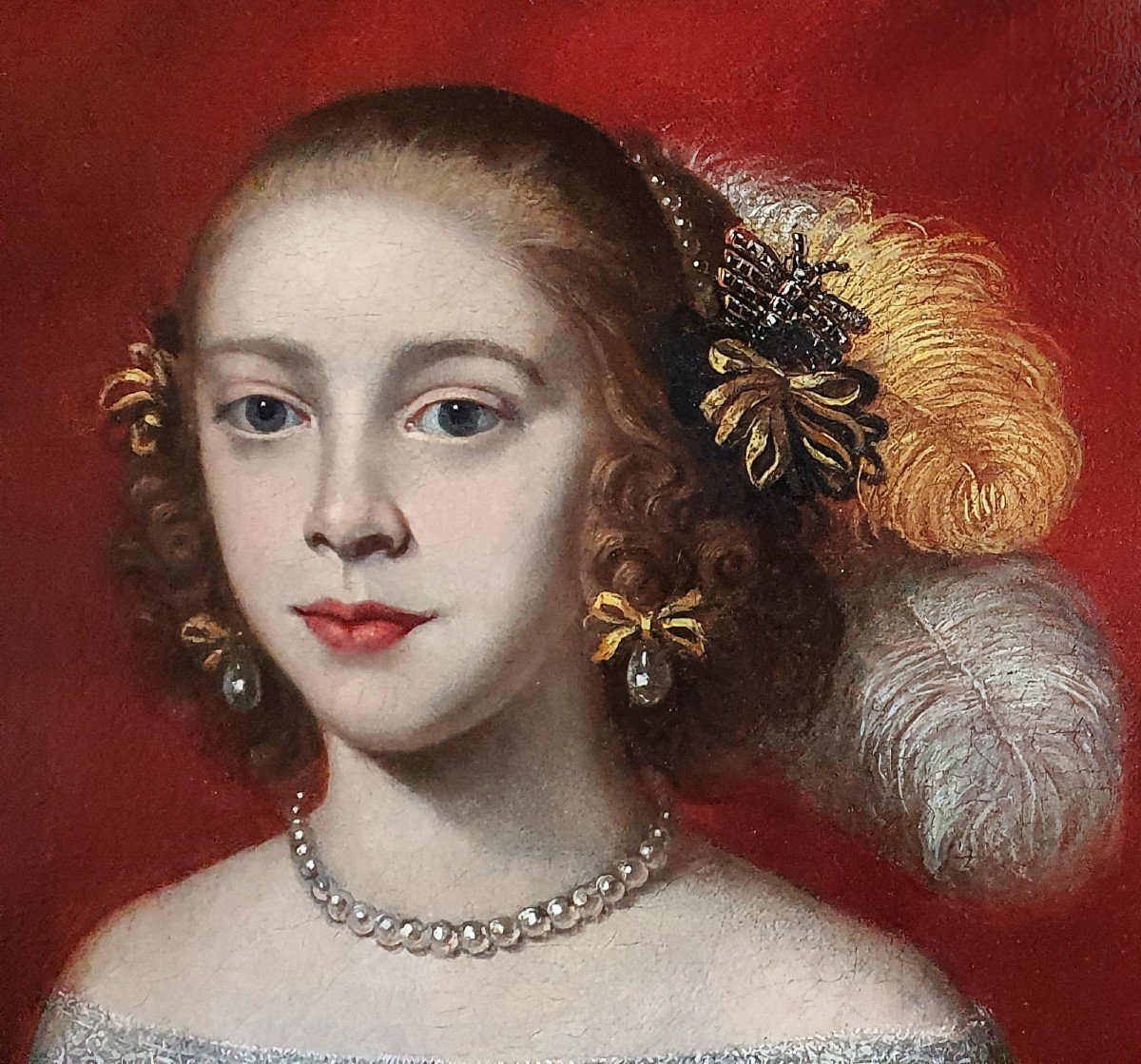"Portrait Of A Young Lady In An Interior With A Pet Dog, Circa 1650-60, Antique Oil Painting"
Portrait of a Young Lady in an Interior with a Pet Dog c.1650-60Circle of Jan Weesop (fl 1640–1653)
This exquisite full-length portrait, painted circa 1650 to 1660, depicts a girl about twelve years old standing in an interior beside a table covered with crimson material bordered with gold. It is a truly majestic scene painted on a grand scale.
The wealth of this girl is apparent and evident in the extraordinary textiles on display – the expensive lace, the dress with its gold and silver detail, and the crimson tablecloth and canopy. Her social background and status in society is further underlined by the whiteness of her skin, the inclusion of the fortified mansion visible through the window, which is perhaps her family estate, and the abundance of jewelery - the expensive pearls around her neck and wrists as matching bracelets, earrings, and her hair was also considered the perfect accompaniment to any outfit. The largest jewel is the diamond brooch and it was almost always pinned on the front of bodice, as we see in our portrait.
The diamond ring on her left finger signifies her engagement; even at the tender age of twelve, during this period a girl is always a potential bride. The left facing stance, suggests that the portrait probably served as a pendant to a portrait of her husband-to-be, in which case he would be inclined towards our right according to the traditional rules of marriage portraiture.
Symbolism is so important in portraiture and it provides a pointed and aspirational narrative that would not have been lost on contemporary viewers of the work. For example, the presence of the family dog, apart from being a charming pictorial device, is a clear allusion to fidelity and to breeding. The rich crimson canopy and table dressing exude sophistication and the plethora of jewels and fine textiles, of course allude to her wealth.
The long-pointed bodice with short bodice sleeves and lace cuffs, off-the-shoulder neckline, shimmering satins, lace collar and cuffs, ribbons, and decorative metallic lace trim were highly fashionable in the 1650’s. As in the decade before, a pearl necklace, often with a matching pair of pearl bracelets Also popular was the long dress with the cartridge pleats at the waist. These skirts were separate from the bodice and hung naturally from the waist without rigid under structures like the farthingales seen in the 16th century, though a bum roll would often be tied on to create a bit of fullness and attractively set off the narrow waist. The exotic plumage of ostrich feathers was another status symbol.
The artist took great effect in rendering surface effects of the fine materials and has embellished the portrait with many fine details such as the 8-winged snapdragon diamond brooch in her hair. The artist was also a supreme colourist – the gold and silver detail on the dress is outstanding.
The work is truly a notable and very beautiful example of mid-17th century portraiture. It is striking for its grand scale and also its quality and age. Held in an antique frame.
Jan Weesop was a portrait painter working in London up to 1653 and was presumed to be of Flemish descent. His career and oeuvre have only recently received the attention that they deserve. Weesop's royalist sympathies may not have been exaggerated, however. The small body of work attributable to Weesop is associated exclusively with staunchly royalist patrons. These include figures such as Elizabeth Murray Countess of Dysart and later Duchess of Lauderdale, but the most prolific patrons are members or allies of the Villiers family. A painting depicts Lord Grandison and Mr Villiers by Weesop, according to a list of 1730. These brothers were the sons of Sir Edward Villiers, the half-brother of the Duke of Buckingham. A further painting, noted in 1730 as Lady Sussex and three children by Weesop is of Anne Villiers, Countess of Sussex, daughter of Buckingham's younger brother, the Earl of Anglesey.
Looked at collectively, the works attributed to him are of a quite recognisable style, particularly in the frequent use of gold decoration on his sitters’ outfits. Had Weesop lived longer he may have presented a challenge to the main portrait painter of the time in England, Sir Peter Lely.
Provenance: UK private collection (Kensington, London)
Measurements: Height 190cm, Width 146cm framed (Height 74.75”, Width 57.5” framed



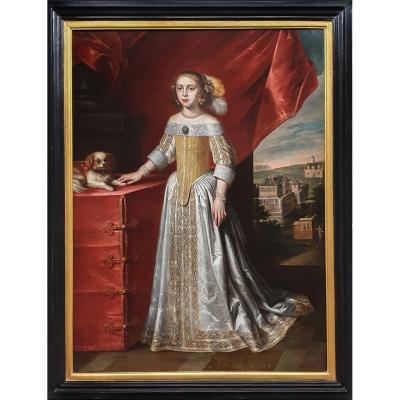
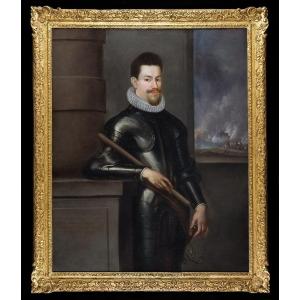
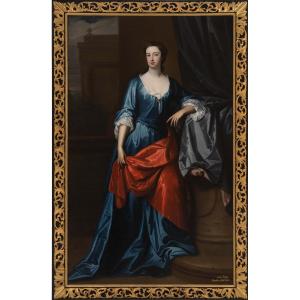



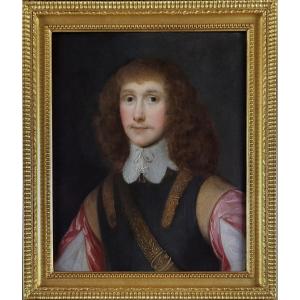
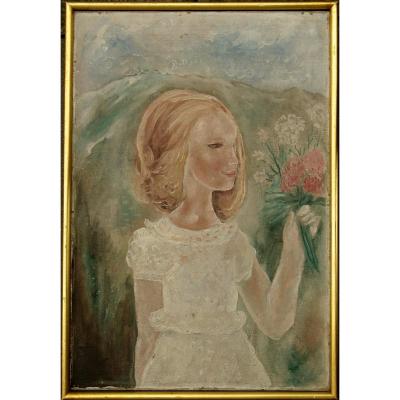
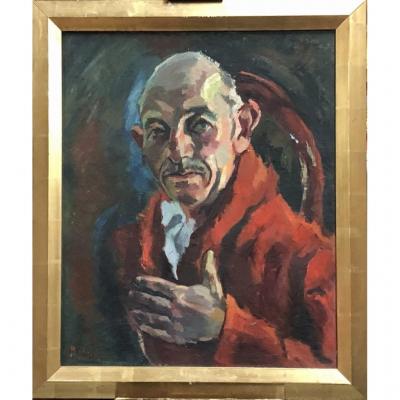

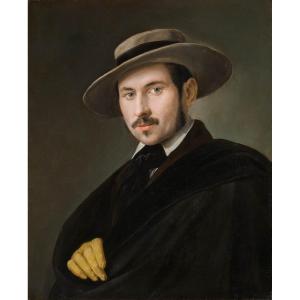
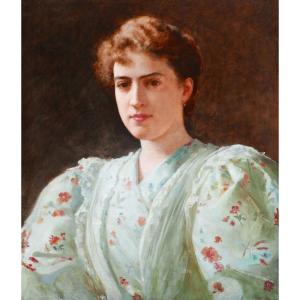
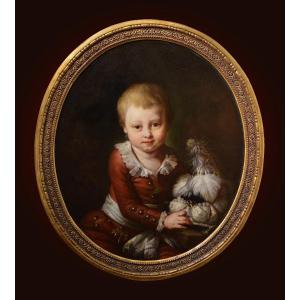




 Le Magazine
Le Magazine Rivista Artiquariato
Rivista Artiquariato TRÉSORS magazine
TRÉSORS magazine

